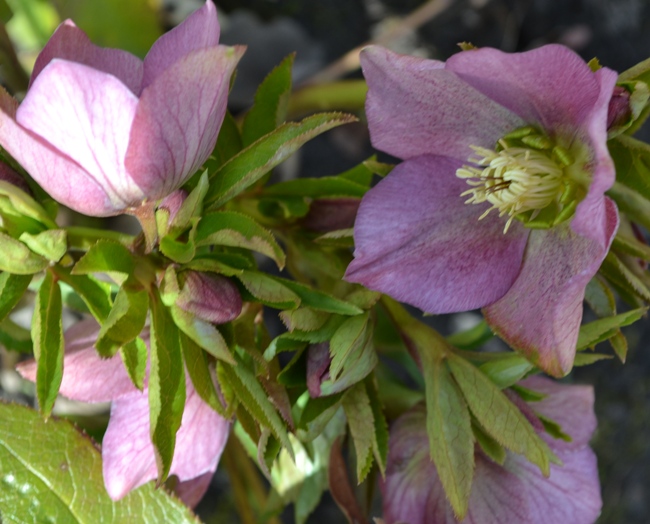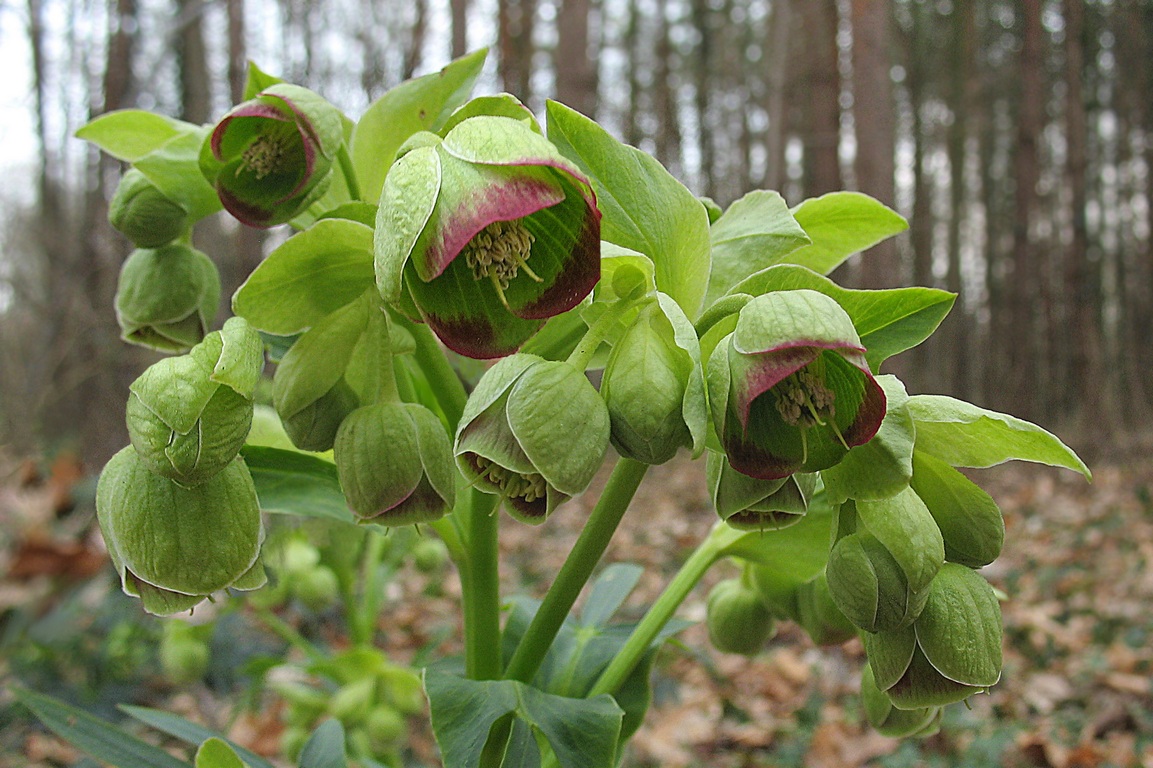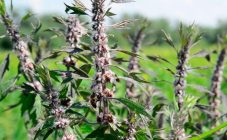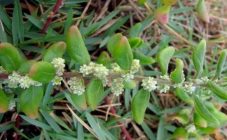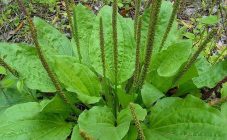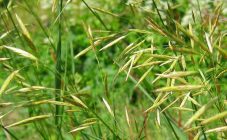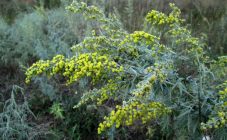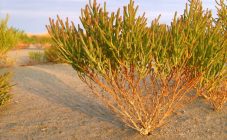The hellebore is a perennial plant of the genus Helleborus, a member of the Rununculaceae family. It gained wide popularity as a garden flower in the days of the Roman Empire. The culture is well known in the central, southern and eastern regions of Europe, western Asia. Under natural conditions, frosty grass is found in forest, rocky areas, in the foothills, in meadows. Most of the types of culture are listed in the Red Book.
Description
Frost grass is an evergreen, frost-hardy herbal plant, the uniqueness of which is the peculiarity of blooming in winter. Due to this distinction, the hellebore is known as the Christmas rose or Christ's rose. In addition, it is believed that the flower is capable of curing many diseases.
This plant is very beautiful and delicate. Hellebore flowers are slightly drooping, large (about 10 cm in diameter). There are types of different colors: white, yellow, cream, greenish, pink, red, burgundy.
Flowers with black lines or a contrasting center are especially beautiful. The leaves of the grass are tough, dense, bright green. They retain their color and shape for almost a whole year. In the spring, old leaves gradually dry out, but young ones grow to replace them.
Hellebore bloom begins at the end of December - January and lasts almost until summer. A positive quality of flowers is their ability not to wither after the flowering period. They dry out slightly, turn pale, but retain their shape and remain on the bush. At the same time, the seeds ripen and spill out.
Grass varieties hellebore
The hellebore genus has about 20 species. The most common ones are:
- Black hellebore (Helleborus niger). A popular type of plant for landscaping. In nature, it is distributed over a large area from Germany to the Balkans. The flowers are large - 8-12 cm in diameter, in white and pink colors. Peduncles are high - up to 60 cm. Leaves are dark green, large. The species stands out for its high frost resistance - up to -35 degrees. Begins to bloom in late March - early April.
The most famous varieties of black hellebore:
Potter`s Whill. A feature of the variety is snow-white, very large flowers - up to 12 cm.
- Louis Cobbett. It blooms with bright pink flowers on burgundy stems.
- Praecox. An early variety, it blooms in November with beautiful pale pink flowers.
- Caucasian hellebore (Helleborus caucasicus). Habitat - the mountainous area of the Caucasus, Turkey, Greece. It tolerates the most severe frosts. Blooms from April to June. Peduncles are tall - up to 50 cm. Flowers are slightly drooping, large - up to 10 cm on average, greenish or yellowish. The most poisonous type of hellebore.
- Smelly hellebore (Helleborus foetidus). The homeland of the variety is Western Europe. It stands out for its not very pleasant aroma and original decorative shape of the leaves. The peduncle grows up to 80 cm in height, abundantly covered with small bell-shaped flowers. Possesses good winter hardiness, endurance in drought conditions. The well-known ornamental variety of the smelly hellebore Wester Flisk is characterized by its red twigs and buds.
- Reddish hellebore (Helleborus purpurascens). The species is common in Hungary, Romania, Ukraine. The leaves of the flower are large, the upper side is dark green glossy, the lower is matte gray.The flowers are small - up to 4 cm, the petals are purple on the outside, greenish inside. The flowering period is April.
- Eastern hellebore (Helleborus orientalis). Habitat - Turkey, Greece, Caucasus Mountains. A low plant - up to 30 cm. Flowers of medium size - up to 5 cm in diameter, a beautiful white-purple scale. Leaves are fleshy, rich green, prone to fungal attack.
The most popular varieties of oriental hellebore:
- Blue anemone. A beautiful plant with delicate purple flowers.
- Rock`n`Roll. The main difference between the variety is creamy flowers with red lines.
- Lady Series. A unique variety, the main feature of which is flowers of 6 different colors on one bush.
Planting and growing a hellebore requires certain conditions. Frost grass prefers light partial shade, a place protected from wind and drafts. Fertile soil with neutral acidity is well suited for planting a plant. The hellebore is propagated by seeds or by dividing the bush. This culture does not tolerate transplantation, it grows slowly. When grown from seed, the plant will bloom 4 years after planting.
Culture properties
Hellebore is a medicinal plant that has become widely used, both in folk medicine and as components of traditional medicines.
Only some types of hellebore can be used as a medicinal plant: the grass is the Caucasian hellebore, as well as the reddish and black hellebore.
There is a lot of controversy as to whether hellebore herb heals and brings more benefits or harms.
This culture has undoubted positive properties:
- Cleans the body, removes toxins and toxins, normalizes the digestive system.
- Used in drugs for the treatment of gout - removes salts.
- Promotes the absorption of proteins and carbohydrates.
- Boosts immunity.
- It has a choleretic effect.
- Helps to cure colds.
With the help of hellebore-based products, respiratory tract diseases can be treated, the work of the cardiovascular system is normalized, and blood flow improves. Ointments, which contain hellebore, are able to cure joint diseases: rheumatism, polyarthritis, osteochondrosis.
Recently, this plant has been used as a dietary supplement, it is recommended to take it for weight loss. Due to its pronounced diuretic effect, such a remedy helps to reduce weight, but since hellebore is a poisonous flower, it must be used carefully. In no case should you combine the use of hellebore infusion with a laxative - potassium is rapidly washed out from the body.
Indication for the use of herbs - a pinch of powder is poured with two tablespoons of water and drunk on an empty stomach half an hour before meals. In this case, you need to monitor the state of the body, in case of poor health, the course of weight loss must be terminated.
Contraindications - individual intolerance, age up to 12 years, diabetes, stomach diseases. An overdose of the drug promotes the elimination of calcium from the body, leads to additional stress on the heart. In such cases, taking the medicine can not cure, but aggravate the disease.
Diseases and pests
Hellebore grass is often affected by:
- Ring spot virus. The disease is not cured. Affected plants are removed and destroyed.
- Downy mildew. The diseased parts are removed, the bushes are treated with special means: Previkur, Ridomil gold.
- Hellebore anthracnose.Affected leaves break off. The acidity of the soil should be reduced, the plant should be treated with copper preparations.
- Slugs and snails. Humidity decreases, pests are collected by hand.
- Aphids. A soap solution is used; in more serious cases, you can use the drugs Aktara, Iskra, Commander.
Hellebore harvest
Hellebore root is used as a medicine. The collection and harvesting of the plant takes place in the summer, after insemination. The plant is dug up, the ground is carefully shaken off. The root is carefully trimmed, washed with cold water. It is not worth soaking - useful substances disappear at the same time. The roots are cleaned, damaged parts are removed. The prepared raw materials are dried at a temperature not higher than 45 degrees.
Hellebore herb is a beautiful flower that pleases the eye during a period when all nature freezes. It brings a little warmth and sun with its flowering on cold days. In addition to its visual appeal, this plant has beneficial properties for the human body. But, using a medicine based on a hellebore, you must remember the precautions and in no case do not use it in large quantities.
